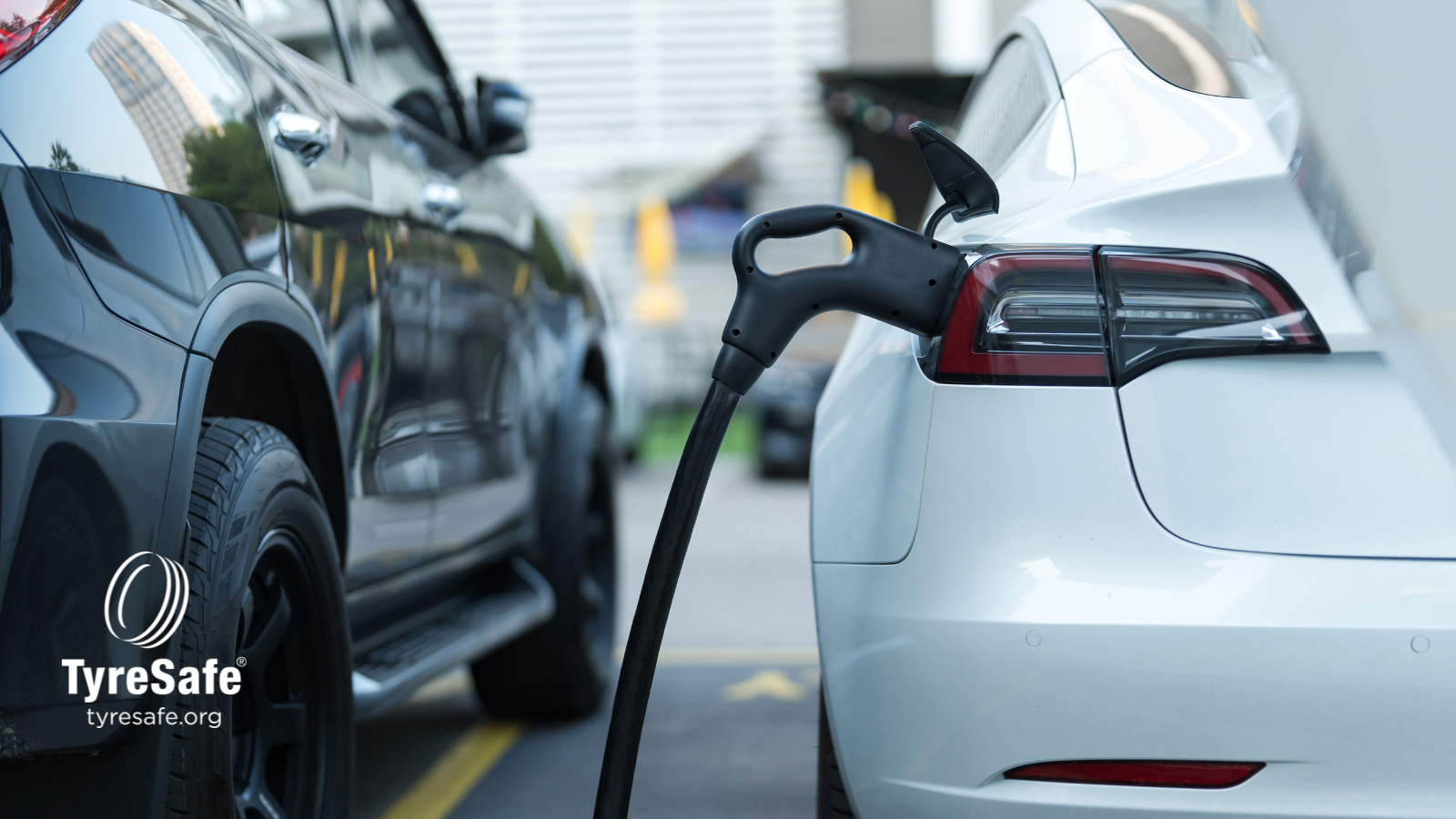Tyres For Electric Vehicles
More and more of us are choosing electric vehicles (EVs) to lead the charge toward a greener, more sustainable future. With the sale of petrol and diesel cars due to end by 2030, it’s important to be plugged into how these vehicles differ to petrol cars.
Where the rubber meets the road for us of course, is with the tyres!
In this handy guide, we’ll help you get to grip with everything you need to know about EV tyres – covering how they differ to traditional tyres, their special features and essential maintenance tips.
Key differences between EV and traditional tyres
As you might suspect, electric and traditional cars are quite different! It would only make sense that their tyres are also designed differently to meet the unique demands of each vehicle.
EV tyres are heavier
The battery in an electric vehicle is 25 times heavier than the battery in a traditional car – weighing in at ~454kg! To accommodate this extra weight, tyres for EV cars are heavier than conventional tyres.
To check the carrying capacity of your tyres, you can find the load rating on the tyre’s sidewall. You can also check the Tyre Load Index to find the maximum load rating.
EV tyres are designed for high torque output
Electric vehicles have a high torque output which means that they can accelerate really quickly. As a result, tyres for EV cars are designed with unique tread patterns and rubber compounds as well as reinforced sidewalls to prevent aquaplaning and provide traction.
Special features of EV tyres
To ensure drivers experience the best performance, efficiency and comfort, tyres for electric cars have plenty of special features.
Less noise
Without the noise of a traditional engine, EV cars are generally quieter, and road noise can feel more noticeable. To help with this, EV tyres are often fitted with a sound-deadening material to reduce cabin noise and create a more comfortable driving experience.
Lower rolling resistance
Rolling resistance is how much resistance your car experiences as it rolls over a surface. A high rolling resistance can result in a more fuel-intensive and less efficient drive. While lots of things can impact this – including your tyre pressure and tyre tread – EV tyres are engineered to minimize rolling resistance. This means you benefit from fewer charging stops and more budget-friendly trips!
More energy-efficient
EV tyres are unsurprisingly more energy-efficient! They achieve this though a combination of lower rolling resistance, optimized tread patterns, aerodynamic design and regenerative braking. As a result, cars fitted with EV tyres can boost their battery range by up to 10%.
Maintenance & replacement
Regular and proactive maintenance is essential to ensure your tyres are safe and perform at their best.
You should inspect your tyres once a month to check for any abnormalities or signs of wear. It is advisable to check your tyre pressure and inspect your tread depth at the same time. Regularly rotating your tyres can also help to evenly distribute wear.
Changing the tyre on an electric car
Changing a tyre on an electric car is much the same as changing the tyre on an older vehicle. You should follow the guidance in your cars manual to find the correct procedure, lifting points and tools to use.
Winter tyres for electric cars
Winter tyres are the safest option between October and March, when temperatures drop, and the roads can become more hazardous due to ice, snow and slush. Due to their heavier weight, higher torque and lower rolling resistance, EV cars can experience longer braking distances. Using tyres that offer reliable handling and are designed for winter weather is essential to staying safe in the colder months.
Common EV tyre FAQs
Let‘s answer some of your common questions.
Do you need special tyres for electric cars?
While there is no legal requirement to use special tyres for electric cars, it is recommended. Recent studies show that traditional tyres can wear down up to 30% faster when used on electric vehicles.
Why do EVs not have spare tyres?
Electric cars don’t typically come with spare tyres. This is because carrying a spare tyre – particularly an EV tyre which weighs more – would reduce the energy efficiency and range of your vehicle.
Does regenerative braking wear out tyres?
Regenerative braking is a process that captures the energy used in braking so that it can be used again. In this type of braking, the car is stopped by the engine instead of by a combination of braking pads and tyre friction. This can result in uneven tyre wear. It’s important to regularly check the condition of your tyres to ensure they are roadworthy and safe.
Learn more about tyres and tyre safety
At TyreSafe, we are dedicated to raising awareness of the importance of tyre safety. Stay safe and sound and road-ready with our tyre help and advice.



